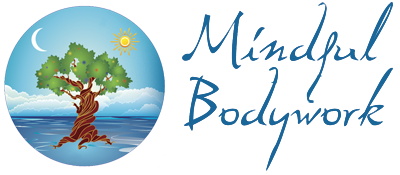NeuroKinetic Therapy™ (NKT)
NeuroKinetic Therapy™ is a powerful healing methodology that can be used both as an assessment tool and as a rehabilitative technique. It gets to the root of chronic and acute muscular tightness and pain, relieving it through working with the motor control center (MCC) of the brain itself in the cerebellum. David Weinstock, one of the principle founders of this manual therapy, describes it as “quick, cost effective treatment for permanent injury rehabilitation.” It can bring almost instant results and is very effective in correcting misalignment and poor posture, preventing injury, and enhancing athletic performance.
My Experience with NKT
I first received NKT training in 2004 at the Institute of Conscious Body Work in Marin County. I subsequently attended dozens of individual and group NKT tutorials, and now regularly assist at NKT seminars. I have gradually integrated the NKT methodology into my own practice, turning to it whenever I am doing rehabilitative or performance-enhancing bodywork. I have found NKT to be absolutely essential for achieving lasting relief from a wide range of conditions and have been amazed at its speed, accuracy, and effectiveness. NKT often uncovers the underlying causes of chronic, acute muscular skeletal pain and dysfunction and quickly relieves it. Another beautiful aspect of NKT is how easily it can be integrated into all other healing modalities. My clients have been delighted with this unique, innovative method and have deeply appreciated the results.
Who can benefit from NKT?
In regards to my practice of NeuroKinetic Therapy™, it has helped thousands of people find lasting relief from a wide array of muscular-skeletal problems such as:
Back Pain
Neck and Shoulder Pain
Thoracic Outlet Syndrome
Shoulder Impingement
Carpal Tunnel
Repetitive Strain
Frozen Shoulder
Knee Injuries
Hip Pain
Sciatica
Elbow injuries
Auto accidents – whip lash
Plantar Fasciitis
TMJ
Many different kinds of athletic and other injuries
And much more!
Does NKT enhance athletic performance and help to prevent injuries?
Yes! There is no doubt that NKT can increase athletic performance, measurably reduce the chance of injury, and aid in the healing process if you are already injured. NKT can give you the edge that may significantly increase your speed, stamina, strength, and accuracy when you need them most.
Why is NKT so effective? Every physical activity has a tendency to rely upon particular groups of muscles. Most of us push those muscles a little too far at some point or perhaps we are simply carrying previous physical imbalances into our sport activities. As a result, those go-to muscles tend to become overworked and tight. The more we practice our specific sport, the stronger the imbalance patterns become, making us vulnerable to injury and inhibited performance. Tennis, for example, requires lots of rotation and constant gripping of the tennis racket; this often leaves players with an inhibited grip and rotational imbalances throughout their body. A similar effect can be found for players of baseball, golf, and so forth.
Every sport has its characteristic movement, one that is often overdone. In that moment of ‘crisis,’ our body develops physical and neurological imbalances. Sports injuries are often the end result of a gradual process of structural and neurological imbalance in the body that could have been easily prevented with NKT treatment. Do yourself a favor and get preventative treatment before you get the injury. If you are already injured, make sure you are treated for the underlying neurological patterns that may have led to the injury. Otherwise, you may end up with the exact same injury next season, but worse!
NKT is quick, cost effective treatment for both rehabilitation and prevention of sports injuries. It can also significantly increase your performance. Why not give it a try and find out just how beneficial NKT can be?
How does NeuroKinetic Therapy™ work?
NKT is based on Motor Control Theory. As Vernon Brooks explains in his book The Neural Basis of Motor Control, the MCC receives information from the limbic system (“fill my needs”) and then the cerebral cortex (“take this route”) before passing the information to the spine (“do it”) and the muscular skeletal system (“doing it”. The MCC coordinates all movement patterns of the body and, thankfully,it learns through failure. Please see the introduction to NeuroKinetic Therapy™, An Innovative Approach to Manual Muscle Testing, by David Weinstock, for more explanation of the theoretical basis of this work and visit www.NeuroKineticTherapy.com for more details

